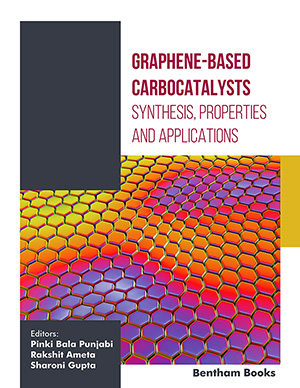Abstract
Graphene bearing 2D (dimensional) layer of carbon atoms bonded in sp2
hybridized state are only 1 atomic-scale thick. However, the graphene can be extended
along the horizontal dimension. The alternate double bonds leading to perfect
conjugation with sp2
hybridization are exhibited in the hexagonal structure
(honeycomb) of graphene. Theoretically and experimentally, the thicknesses of
graphene have been determined and are in the nano-meter range. The extraordinary
mechanical and electrical properties exhibited by such a 2D material have inspired
scientists for device fabrication methodologies that can shift the synthesis from lab
scale to large scale. It is considered the strongest material on earth, almost 100
times stronger (i.e., strength) than the best steel. Since graphene is only 1 atomic-scale
thick and transparent, the characterization of graphene is complex but essential. The
thickness down to one atomic layer in graphene can be identified by the light
interference causing color contrast. Thus, optical microscopy-based methods enable the
identification of graphene or its derivatives; on the other hand, Raman spectroscopy,
which is sensitive to molecular bonding and geometric structure, is commonly
employed for the quality determination of graphene-based materials. In this chapter,
various characterization techniques are discussed, enabling the characterization of
graphene and graphene-based materials (GBMs).
Keywords: Characterization, Fourier-transform infra-red Spectroscopy (FT-IR), Graphene, Graphene Sayers, Graphene Oxide, Optical Microscopy, Raman Spectroscopy, Reduced Graphene Oxide, Scanning Tunneling Microscope (STM), Transmission Electron Microscope (TEM), X-ray Shotoelectron Spectroscopy (XPS).






















